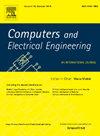Driving cycle-centric design optimization and experimental validation of high torque density outer rotor 8/18 MTSRM for an E-Bike
IF 4.9
3区 计算机科学
Q1 COMPUTER SCIENCE, HARDWARE & ARCHITECTURE
引用次数: 0
Abstract
This paper presents an innovative methodology for optimizing the design parameters of a 500 W low-speed outer rotor switched reluctance motor (OR-SRM) for an electric bicycle (E-bike) in accordance with a driving cycle. Design optimization of SRMs based on driving cycles has been minimally explored in the literature, with all existing research focusing exclusively on high-speed electric vehicle (EV) applications. These studies utilized computationally intensive dynamic current analysis methods to account for the significant dynamic effects incurred. Given the E-bike's low-speed characteristics, the present study mitigates the computational load of design optimization through static current analysis. A high torque density 8/18 OR-multi-teeth (MT) SRM topology has been proposed. The benefits of this topology, such as mass, cost, torque ripple reductions, and improved torque density, have been highlighted through a comparison with a conventional 6/10 OR-SRM topology. The reliability of the finite element analysis models used in this study is validated through experiments conducted on an 8/18 OR-MTSRM prototype. The multi-objective design optimization aims to maximize starting torque and minimize torque ripple and electromagnetic losses throughout the driving cycle. The efficacy of the optimization is confirmed by the enhancement in the performance parameters of the optimal design compared to the preliminary design.
电动自行车高转矩密度外转子8/18 MTSRM驱动工况优化设计及实验验证
本文提出了一种基于行驶周期的500w低速电动自行车外转子开关磁阻电机(OR-SRM)设计参数优化方法。基于行驶周期的srm设计优化在文献中很少被探索,所有现有的研究都集中在高速电动汽车(EV)的应用上。这些研究使用计算密集的动态电流分析方法来解释所产生的显著动态效应。考虑到电动自行车的低速特性,本研究通过静态电流分析减轻了设计优化的计算量。提出了一种高扭矩密度8/18 or -多齿SRM拓扑结构。通过与传统的6/10 OR-SRM拓扑结构的比较,该拓扑结构在质量、成本、扭矩脉动减少和扭矩密度提高等方面的优势得到了突出体现。通过在一台8/18 OR-MTSRM样机上进行的实验,验证了本文所采用的有限元分析模型的可靠性。多目标设计优化旨在最大化启动转矩,最小化整个行驶周期的转矩脉动和电磁损耗。优化后的性能参数与初步设计相比有所提高,验证了优化的有效性。
本文章由计算机程序翻译,如有差异,请以英文原文为准。
求助全文
约1分钟内获得全文
求助全文
来源期刊

Computers & Electrical Engineering
工程技术-工程:电子与电气
CiteScore
9.20
自引率
7.00%
发文量
661
审稿时长
47 days
期刊介绍:
The impact of computers has nowhere been more revolutionary than in electrical engineering. The design, analysis, and operation of electrical and electronic systems are now dominated by computers, a transformation that has been motivated by the natural ease of interface between computers and electrical systems, and the promise of spectacular improvements in speed and efficiency.
Published since 1973, Computers & Electrical Engineering provides rapid publication of topical research into the integration of computer technology and computational techniques with electrical and electronic systems. The journal publishes papers featuring novel implementations of computers and computational techniques in areas like signal and image processing, high-performance computing, parallel processing, and communications. Special attention will be paid to papers describing innovative architectures, algorithms, and software tools.
 求助内容:
求助内容: 应助结果提醒方式:
应助结果提醒方式:


